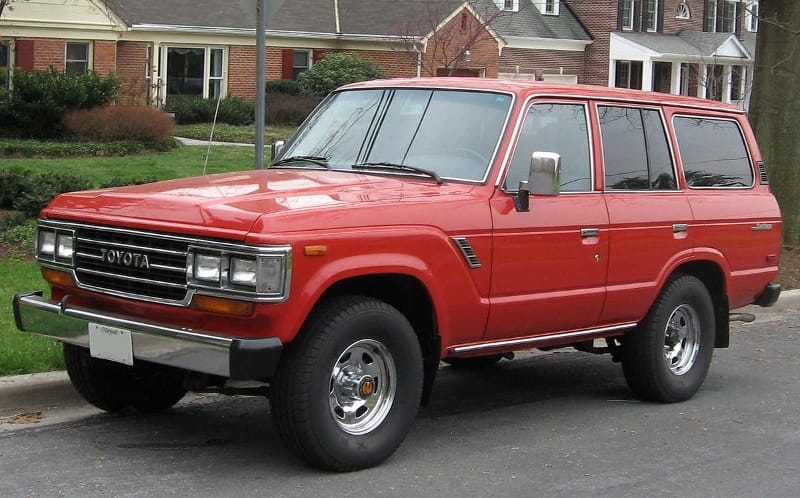 Remember when you were a little kid and the idea of playing in the mud outside after it rained got you hyped? Pushing your toy cars and trucks through the mud puddles while you did your best to enunciate the sound of a beefed-up engine was one of life’s simple joys. Well, now you’re a grown-up with a rugged, four-wheel-drive rig and maybe you want to kick up some summer mud, albeit on a much grander and exciting scale. Here’s a video that gives you a taste of what a blast this sub-category of off-roading can be.
Remember when you were a little kid and the idea of playing in the mud outside after it rained got you hyped? Pushing your toy cars and trucks through the mud puddles while you did your best to enunciate the sound of a beefed-up engine was one of life’s simple joys. Well, now you’re a grown-up with a rugged, four-wheel-drive rig and maybe you want to kick up some summer mud, albeit on a much grander and exciting scale. Here’s a video that gives you a taste of what a blast this sub-category of off-roading can be.
 Choose your weapon
Choose your weapon
To probably nobody’s surprise, the most popular mud tamer is the modern-day Jeep Wrangler and its very similar old-school forebears, Jeep’s CJ-5 and CJ-7. Compact dimensions, plenty of ground clearance, stout four-wheel-drive components and room in the wheel wells for large off-road tires are key reasons these iconic Jeeps reign supreme.
But they are far from the only good choices. Older Toyota Land Cruisers (the more basic four-door SUV styles as well as the Jeep-like FJ40) are very capable and durable rigs, as are the first- and second-generation Ford Broncos. Of course, 4WD pickup trucks are solid picks too, though the massive, full-size ones can sometimes prove too bulky in off-road environments with narrow trails. As such, we favor compact, more maneuverable pickups such as the Ford Ranger, Nissan Frontier and Toyota Tacoma. One might also consider a Land Rover Defender, though aces off road, they tend to be rather pricey.
Mudding 101

1988 Toyota Land Cruiser
Depending on the scenario, simply popping your truck into 4WD and driving on through the muck as if you’re on pavement may not be sufficient. As with any type of challenge, there are proper techniques that separate the hacks from those that know what they’re doing. As such, thanks to the pros at off-road.com, fourwheeler.com and allstate.com, we’ve come up with a six-pack of tips to make sure that you move through the mud.
1) Don’t go it alone.
Having at least one other person with a truck and recovery gear (such as a powerful winch) provides peace of mind, as well as a helping hand (and truck) should you get stuck.
2) Air down your tires.
Lowering your tires’ pressure increases surface area and allows the tires to flex and grab traction better than when they’re fully-aired up for on-road use. Dropping down to 18 to 20 psi should be about right.
3) Recon first.
If you're trying to negotiate a deep mud puddle/bog, you might want to hop out and take a closer look first. Grab a long stick and use it to get an idea of the mud’s consistency, its depth, and if there are any large rocks or tree roots lying below in wait.
4) Take the proper line.
If others are also having fun in the muddy playground, watch and take note of the line they’re taking as they work their way through. Usually going straight is best, but there may be some obstructions or stickier points that may dictate using a different, more traction-friendly line that somebody else has demonstrated.
5) Start out in 4WD low.
This will obviously maximize your traction and torque at the low speeds you’ll be using to make your way through the mud.
6) Take it easy.
Throwing up 15-foot high rooster tails of muddy water at higher speed may look cool in commercials, but you could lose control and end up doing some damage or stalling out your engine. It’s slow and steady that wins this race. As the experts say and as with other types of off-roading, you should go as slow as possible but as fast as necessary to keep moving forward. Momentum, not speed, is your best friend here.
Muddy buddies
 So you’ve discovered that you really dig playing in the mud. Fortunately, so do a lot of other off-road enthusiasts. Reading the various online forums for tips on where to go, how to set up your vehicle and how to improve your skills will help you enjoy your mucked up adventures even more. We suggest also checking out enthusiast sites such as mudtrails.com and offroadworld.net, which are also great for finding new friends that share this dirty passion.
So you’ve discovered that you really dig playing in the mud. Fortunately, so do a lot of other off-road enthusiasts. Reading the various online forums for tips on where to go, how to set up your vehicle and how to improve your skills will help you enjoy your mucked up adventures even more. We suggest also checking out enthusiast sites such as mudtrails.com and offroadworld.net, which are also great for finding new friends that share this dirty passion.
Are you a mudding fan? Share your favorite mudding spots in the comments.






